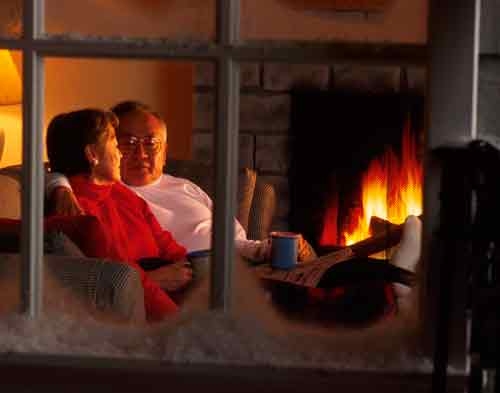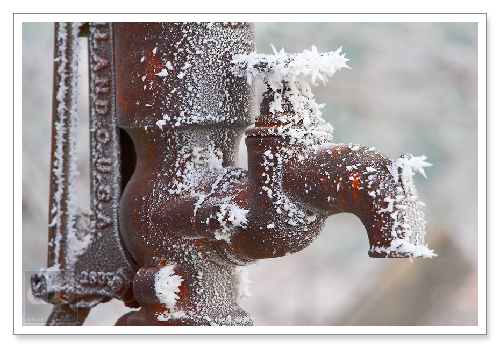Stay warm and cozy
So it has finally arrived, that wonderful time of year when temperatures drop and there's a chill in the air. Winter is on its way. No, there isn't 4 feet of snow and it isn't 20 below. It isn't even below freezing most of the time, but there are nights and an occasional day when the temperature drops below that fated 32 degrees Fahrenheit.
Living in the desert offers unique challenges because we can sometimes see as much as 50 degree Fahrenheit temperature changes in a day.
If that wasn't enough, we can get several inches of rain in just a couple of hours, which creates its own unique set of problems.
The U.S. Energy Information Administration expects demand for electricity, natural gas and heating oil to increase by 8 percent, 14 percent and 17 percent, respectively, this season and predicts comparatively higher heating costs.
Energy experts suggest that consumers can improve the efficiency of their home's ability to retain heat by taking the following steps now:
n Tune up and clean furnaces. This will save money and ensure the system is operating safely.
Replacing air filters at least once every three months helps your unit run more efficiently and can save about $100 a year in energy costs.
n Contact utilities for rebate programs to upgrade or replace old and inefficient equipment, and a free energy audit. Some utilities even offer free energy-saving materials as well.
n Seal around doors, windows, heating ducts and water heaters with easily installed wraps. Consider a professional for getting this work done quickly.
n Have window film professionally installed. Window film can direct radiant heat back into the home where it belongs.
Depending on the location and other elements, it can reflect from 67 percent to 93 percent of interior heat back into the room.
"When window film is installed on a home's windows that are in good condition, especially those with single-pane glass, it can make a big difference to the overall energy bill, and also protect furnishings from UV fading," said Darrell Smith, executive director of the International Window Film Association.
This can save an average of $17 per window on your annual energy bill.
NV Energy experts said replacing old windows with multipaned, thermally broken, vinyl-framed windows can significantly reduce heating needs during the winter and prevent cold from coming inside.
Jen Hicken, a manager for The Home Depot in Henderson, said one of the best ways to keep your home's temperature comfortable is with window coverings.
"The No. 1 window covering would be shutters, followed by honeycombed cellular shades," she said.
With heating and cooling costs accounting for nearly half of a person's annual energy bill, taking a few precautions can greatly reduce expenses, according to the Environmental Protection Agency's Energy Star program
Hicken also offered a few suggestions to maintaining an acceptable temperature level in your home and keeping winter elements outside, including using spray foam insulation around windows and doors, as well as any other openings in the outer surface of your home. Closing all the gaps can save as much as $225 a year in heating and cooling costs.
"Make sure your thermostat is programmable and can hold the temperature inside your home to moderate level. Otherwise, the unit has to work twice as hard to bring the temperature back up," she said.
A programmable thermostat can be installed in less than an hour and save homeowners around $200 year.
Hicken also said it is vital to protect your water pipes from freezing temperatures.
"Besides wrapping pipes, we also offer decorative insulated covers for water faucets and valve boxes," she said.
The experts at Mr. Rooter Plumbing said frozen pipes is the real danger of winter's dipping temperatures, especially for those who live in higher elevations. They suggest:
n Insulate your pipes. Cover faucets and exposed pipes with insulation or wrap thick towels around them. Add a water heater blanket to your water heater.
According to Hicken, it takes about 15 minutes to install an insulating jacket around your water heater and it can reduce energy costs by about $30 a year.
n Secure basement doors, windows and crawl space openings.
n Drain outside water lines. Remove garden hoses from outdoor faucets, close interior valves that lead to outside hose taps and open hose taps to drain.
n Apply electrically powered tape to pipes. Follow the manufacturer's instructions or call a professional.
n Open cabinet doors. This allows heat to circulate and keeps interior pipes warm.
n Locate the main water shut off valve and learn how to use it in case of frozen or burst pipes.
n Have a hair dryer handy in case your pipes do freeze. Heat the exterior of the pipe with the hair dryer by slowly applying the heat and moving the dryer constantly.
The first step to safely thawing frozen pipes is turning off the water at the main water shut off valve. Next, open the nearest faucet to allow water to drain as the ice melts. Now it's time to use the hair dryer to heat the pipes, or you can wrap a hot wet rag around the pipes. Do not attempt to thaw exposed frozen pipes with an open flame such as an acetylene torch, they said.


















